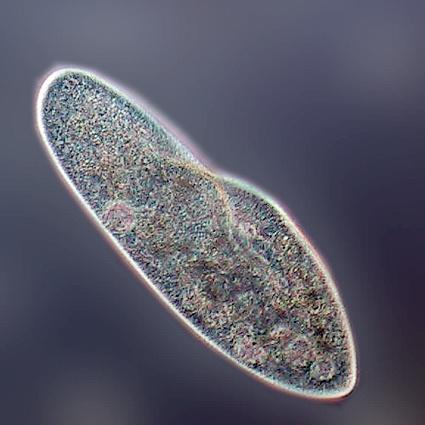This is the microscopical view of Paramecium caudatum. Paramecium is a single cell animal, named also protozoon. It contains cytoplasm, trichocysts, the gullet, food vacuoles, the macronucleus, and the micronucleus in its cells. The macronucleus contains three copies of the whole genom − known from the genom sequencing.
Paramecia feed on microorganisms like bacteria, algae, and yeasts. To gather its food, the paramecium uses its cilia to sweep up food along with some water into the cell mouth after it falls into the oral groove. The food goes through the cell mouth into the gullet. When enough food has accumulated at the gullet base, it forms a food vacuole in the cytoplasm, and travels through the cell, through the back end first. As it moves along, enzymes from the cytoplasm enter the vacuole to digest the contents, digested nutrients then going into the cytoplasm, and the vacuole shrinks. When the vacuole reaches the anal pore, it ruptures, expelling its waste contents to the exterior.
Click on this link to see more pictures on microorganisms!
